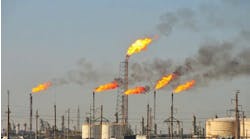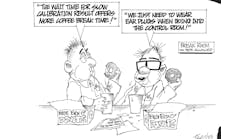The market for Coriolis flowmeters has enjoyed strong growth in recent years and 2008 was no exception as technological improvements continue to expand their application range, says ARC analyst analyst Joe Gillespie, the principal author of ARC's "Coriolis Flowmeter Worldwide Outlook" report.
Revenue growth was strong in all vertical industries, driven by greater user acceptance of the technology, increased sales of larger-sized meters, advances in measuring two-phase flow and start-empty/finish-empty batch applications, the emergence of two-wire designs and increasing popularity in custody-transfer applications, particularly in the oil and gas industry.
This combination of factors provided a big lift to the Coriolis market, and is the reason Coriolis meters have been one of the fastest-growing flow technologies in recent years. However, says Gillespie, "It's safe to assume that this period of extraordinarily strong growth has passed, and growth rates will drop markedly in the near future as the effects of the global economic recession take its toll on the market for Coriolis flowmeters. Negative market growth is a possibility for 2009."
The versatility of Coriolis flowmeters is the most significant factor contributing to the growth of the technology. Direct mass flow measurement eliminates the need to compensate for other process variables, and Coriolis flowmeters can provide simultaneous outputs corresponding to volumetric flow rate, total flow, density and temperature. No other flow device has such extensive capabilities. Traditional mass flow measurement requires a primary flow element, numerous sensors and related transmitters connected to a computational device in order to compensate for associated process variables. These additional devices add significant costs, are potential sources of error and increase the maintenance profile of a company's field systems.
The tumultuous economic conditions that have materialized over the past year have galvanized many governments to construct large economic stimulus packages in an attempt to quell what has been called "The Great Recession." The U.S. and China in particular have released stimulus plans ($787 billion and approximately $586 billion, respectively) that focus on rebuilding and commissioning new infrastructure projects. In an environment where the unavailability of capital for investments is stifling private investment, these government injections will help support the automation market throughout the remainder of the downturn.
Regionally, suppliers can expect to see the largest growth in Asia, where heavy investment in new plant construction continues in core sectors, and in the Middle East, due to its high concentration of oil and gas activities and its growing focus on water desalination. In the mature North American and Western European markets, suppliers will largely rely on replacement business, as Coriolis meters continue to gain preference over other flow technologies. Latin America will see above average growth, but remains a relatively small market for Coriolis flowmeter suppliers.


